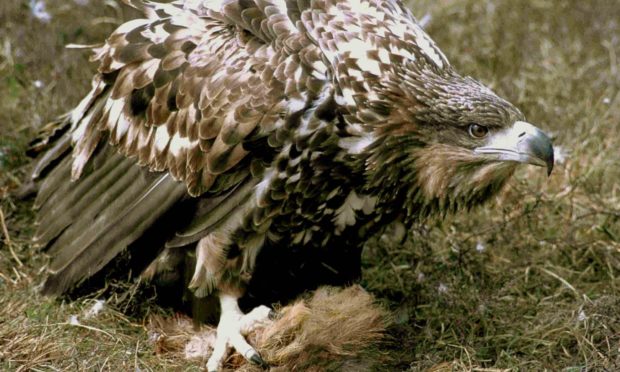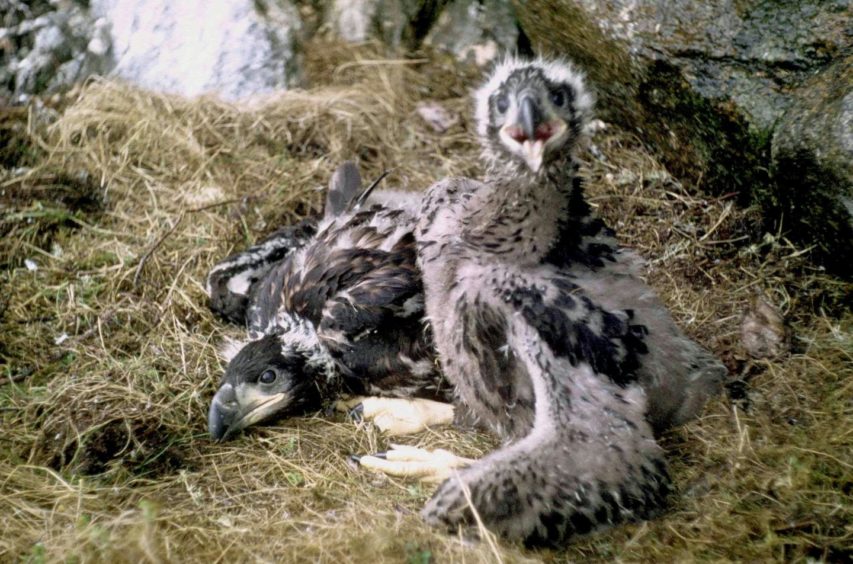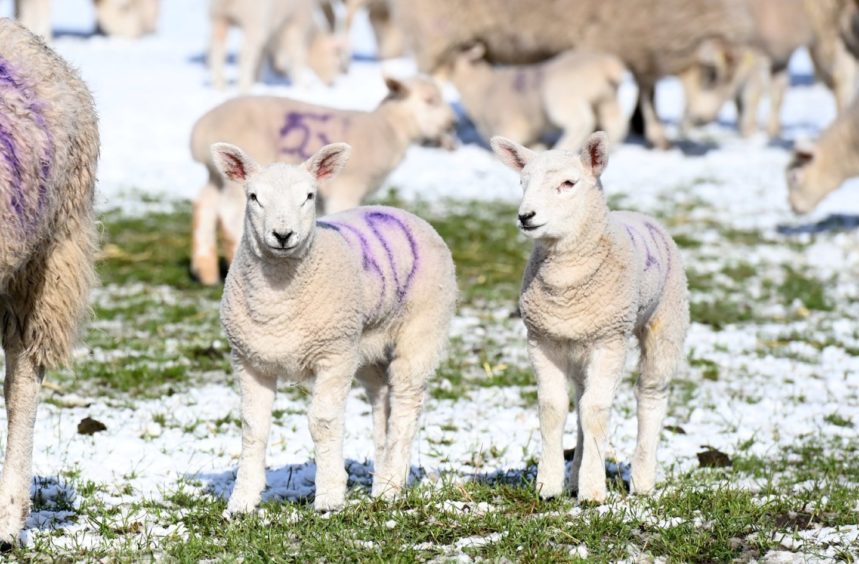I was intimately involved in the reintroduction of the white-tailed sea eagle to Scotland in 1975.
Despite Peter Fraser’s claim in his recent letter to The Press & Journal, there was in fact a detailed assessment made by a nature conservancy advisory panel, prior to the Rum reintroduction.
Between 1975 and 1985, the Nature Conservancy Council (NCC) released 82 juveniles in the Isle of Rum – a national nature reserve in the heart of the species’ former range.
A successful return to Scotland
At the time, the white-tailed sea eagle was under serious threat from pesticides throughout its European range. Only northern Norway still retained a healthy population and their government were happy to issue us with the necessary licences.
To assist the declining species’ comeback from where it had been cruelly exterminated, it was deemed that the west of Scotland could offer very suitable conditions, namely, full legal protection and much reduced persecution, clean waters and sufficient natural prey.
The story of the successful return to its old haunts in Britain – along with two earlier unsuccessful ones involving only seven birds – has been well told over the years. Countless news features have appeared in the press and on TV, various programmes and videos have been made, and I have written two books on the topic.
So the general public was well informed, yet little adverse reaction was generated at the time.
Further releases have now taken place – in Wester Ross, East Scotland, the Isle of Wight and in south-west Ireland. In my latest book, A Saga of Sea Eagles, I conclude with a chapter titled Living with Sea Eagles.
There’s no need to worry about golden eagles
P&J readers have no need to worry about our golden eagles. Some are merely giving up the empty coastal nest sites they took over from the extinct sea eagle in the first place, and have returned to their original inland or mountain haunts. Golden eagle breeding pairs in UK have been stable for decades, and in recent years young Scottish goldies have been taken for a reintroduction into Donegal.
The drastic persecution of the species was entirely unjustified
Detailed research over the years, both here and abroad, has revealed an extensive list of nearly 200 different prey items taken by sea eagles. Their diet consists primarily of fish, birds (including gulls, crows, geese and goslings which should be reassuring to the farming community), small mammals and carrion.
The species has wide tastes and no need to turn to lambs “because food is scarce”. After all, white-tailed sea eagles are much closer cousins to vultures than they are to golden eagles. I have studied old accounts by Scottish naturalists, egg collectors and sportsmen alike which suggested that lambs were a minor item in the sea eagle’s diet.
Indeed, I am of the opinion that the drastic persecution of the species was entirely unjustified. Today, of course, it would be totally illegal since, like many birds, the sea eagle is fully protected.
Lamb killing is overexaggerated
Lambs were a high-profile excuse to justify all the shooting, poisoning and nest destruction that cruelly wiped out sea eagles (and some other birds of prey) early in the 20th century. Now that the birds are back where they belong and thriving, they have unjustly held onto their bad reputation.
Every spring, lamb killing is regularly highlighted by the media, but research is now showing this to be exaggerated. Several meticulous studies have revealed that the incidence of live, apparently healthy lambs being taken is rare.
This research has also emphasised how any mortality that might be caused by eagles locally poses no threat whatsoever to the wider sheep industry in the Highlands and Islands. Lambs die from a variety of other causes. Sea eagles have never been recorded anywhere as killing live sheep and most of the lambs that eagles might be seen feeding on are found already dead.
Sea eagles are a success we should celebrate
We have some 130 breeding pairs of white-tailed sea eagles in Scotland. Following full protection afforded to them in 1968, Norway’s long coastline now has around 4,000 pairs, with virtually no reports of them ever taking lambs.
Many countries have hailed our reintroduction as a conservation success story and have emulated it with other endangered species. We should be viewing our sea eagles as a national asset, enhancing our diminishing biodiversity – a mission for which many countries throughout the world (including the UK) have signed up.
Furthermore, several Hebridean islands are already enjoy huge sums of green tourist money the birds are now generating for their local economy. A recent study showed that some £5 million per year was drawn into Mull from the assorted activities of tourists coming to see its sea eagles – a success to be celebrated.
John Love is a writer, illustrator and lecturer. He is a member of the UK Sea Eagle Project Team


